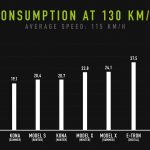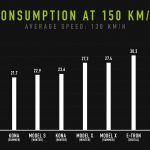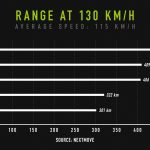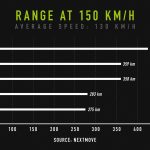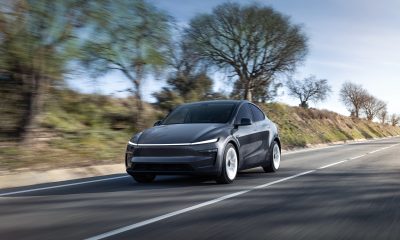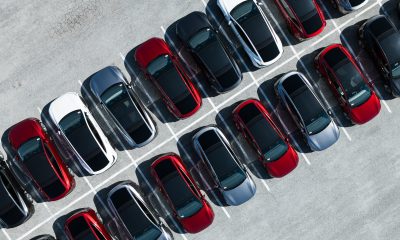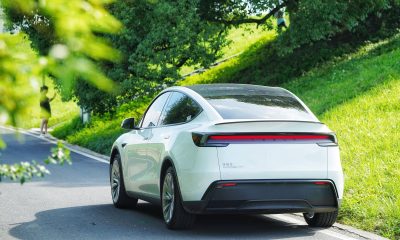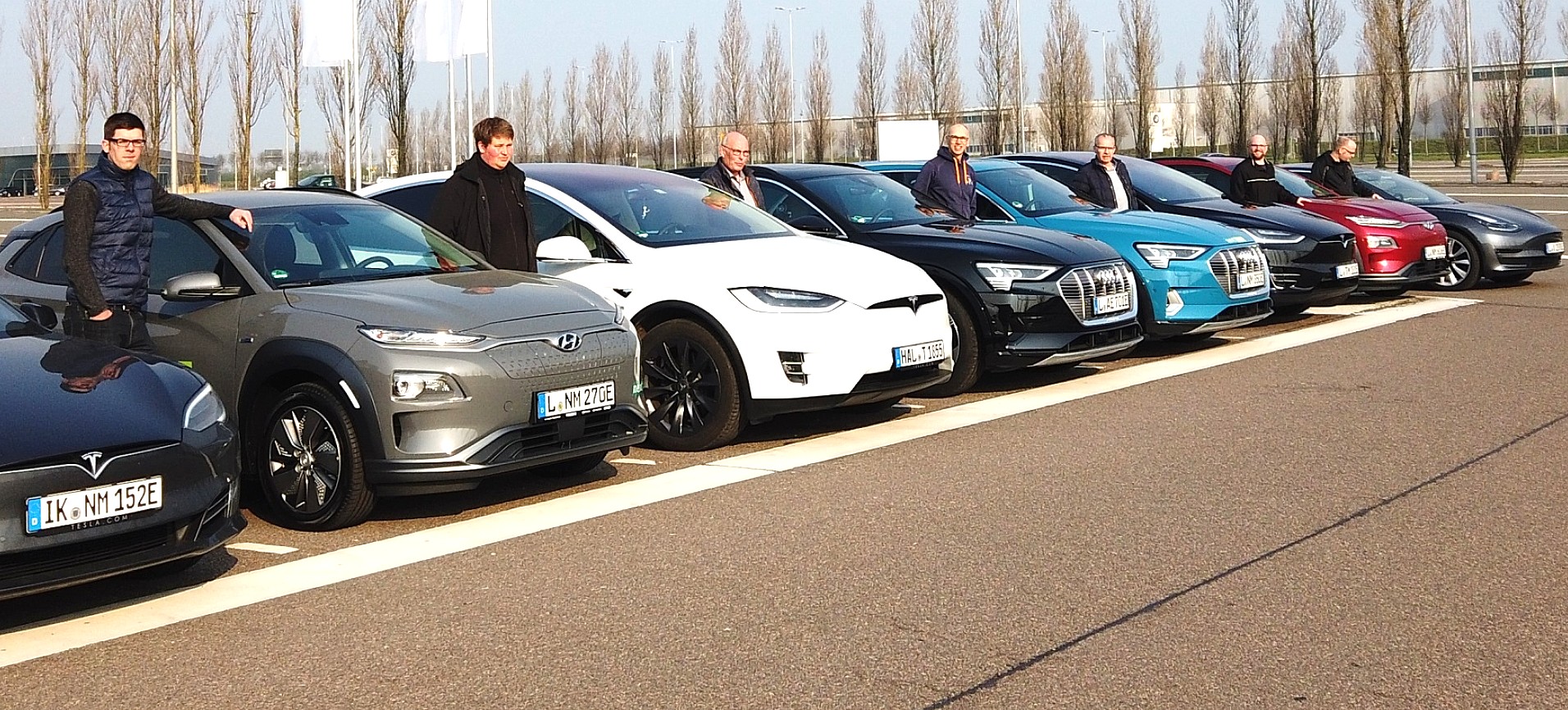

News
Tesla Model S, 3, X takes on Audi e-tron in Autobahn range and efficiency test
German electric vehicle rental company nextmove recently conducted what could only be described as the ultimate Autobahn efficiency and range test, pitting the Tesla Model S, 3, and X against the upstart Audi e-tron and the bang-for-your-buck Hyundai Kona Electric. Following the EV rental firm’s test, it was evident that veteran automakers such as Audi still have a long way to go before they catch up to Tesla’s experience in electric cars.
Eight vehicles were used for nextmove’s test: a Model S 100D (equipped with 19” winter tires), two Tesla Model X 100D (one fitted with 19” winter tires and the other fitted with 20” summer tires), one Tesla Model 3 Dual Motor AWD (equipped with 19” summer tires), two Audi e-tron (one with digital side mirrors and another with classic mirrors; both equipped with 21” summer tires), and two Hyundai Kona Electric (one fitted with 17” summer tires and the other fitted with 17” winter tires). Each vehicle’s tire pressure was set according to manufacturer specifications, and each was driven by an experienced electric car driver.

Several rules were observed to keep the Autobahn test as controlled as possible. Cruise control was only utilized once the target cruising speed of 130 kph (81 mph) and 150 kph (93 mph) was reached. Features such as Regenerative Braking were also avoided, and heating was largely disabled. Thet route was 85 km (52.8 miles) long, with the vehicles traveling 130 kph one way and 150 kph in the other.
The results of both the 130 kph (81 mph) and 150 kph (93 mph) tests revealed that the Tesla Model 3 was the most efficient vehicle among the eight that the EV rental company evaluated. Following the Model 3 was the Hyundai Kona Electric in summer tires, which is, in turn, followed by the Tesla Model S 100D. The largest vehicle in the group, the Tesla Model X, proved less efficient than the Model 3, Model S, and Kona Electric, but it proved notably more efficient than the Audi e-tron.
- (Photo: nextmove.de)
- (Photo: nextmove.de)
The Audi e-tron and the Tesla Model X had already gone head-to-head in a nextmove test in the past. During the previous test, the EV rental company utilized a pre-production version of the Audi e-tron, and it proved to be the electric equivalent of a gas-guzzler, being 23% less efficient than the larger, heavier Tesla Model X.
While the Audi e-tron performed much better against the Tesla Model X than its pre-production counterpart in the recent test, the all-electric SUV still proved less efficient than the Silicon Valley-made crossover. Quite interestingly, the difference in energy consumption between the Tesla Model X and Audi e-tron was more prominent at lower speeds than at higher speeds.

Tesla’s Model S, 3, and X cleared the house in terms of range. During the 130 kph test, the Model S 100D showed a range of 480 km (298 miles), the Model X 100D showed a range of 409 km (254 miles), and the Model 3 managed a range of 406 km (252 miles). The Hyundai Kona Electric turned in a respectable 322 km (200 miles), and the Audi e-tron, in last place, managed 301 km (187 miles).
The results of the 150 kph test were quite similar. The Model S, X and 3 proved superior once more with a range of 428 km (265 miles), 359 km (223 miles), and 358 km (222 miles). The Hyundai Kona Electric managed 283 km (176 miles), while the Audi e-tron achieved a range of 275 km (171 miles). With these results in mind, it appears that veteran automakers such as Audi still have their work cut out for them in terms of designing electric vehicles that offer a balance of power, efficiency, and range.
- (Photo: nextmove.de)
- (Photo: nextmove.de)
It should be noted that the Tesla Model X utilized by nextmove in its Autobahn efficiency test was a 100D unit, and thus, the vehicle was not yet equipped with the company’s updated high-efficiency drive units. With a “Raven” Model S and Model X in the equation, the German EV rental company’s test could very well have ended in a far more lopsided manner.
The full results of nextmove‘s eight-way comparative test could be accessed here.
Watch nextmove’s Autobahn efficiency test in the video below. English subtitles are available.
News
Tesla UK sales see 14% year-over-year rebound in June: SMMT data
The SMMT stated that Tesla sales grew 14% year-over-year to 7,719 units in June 2025.
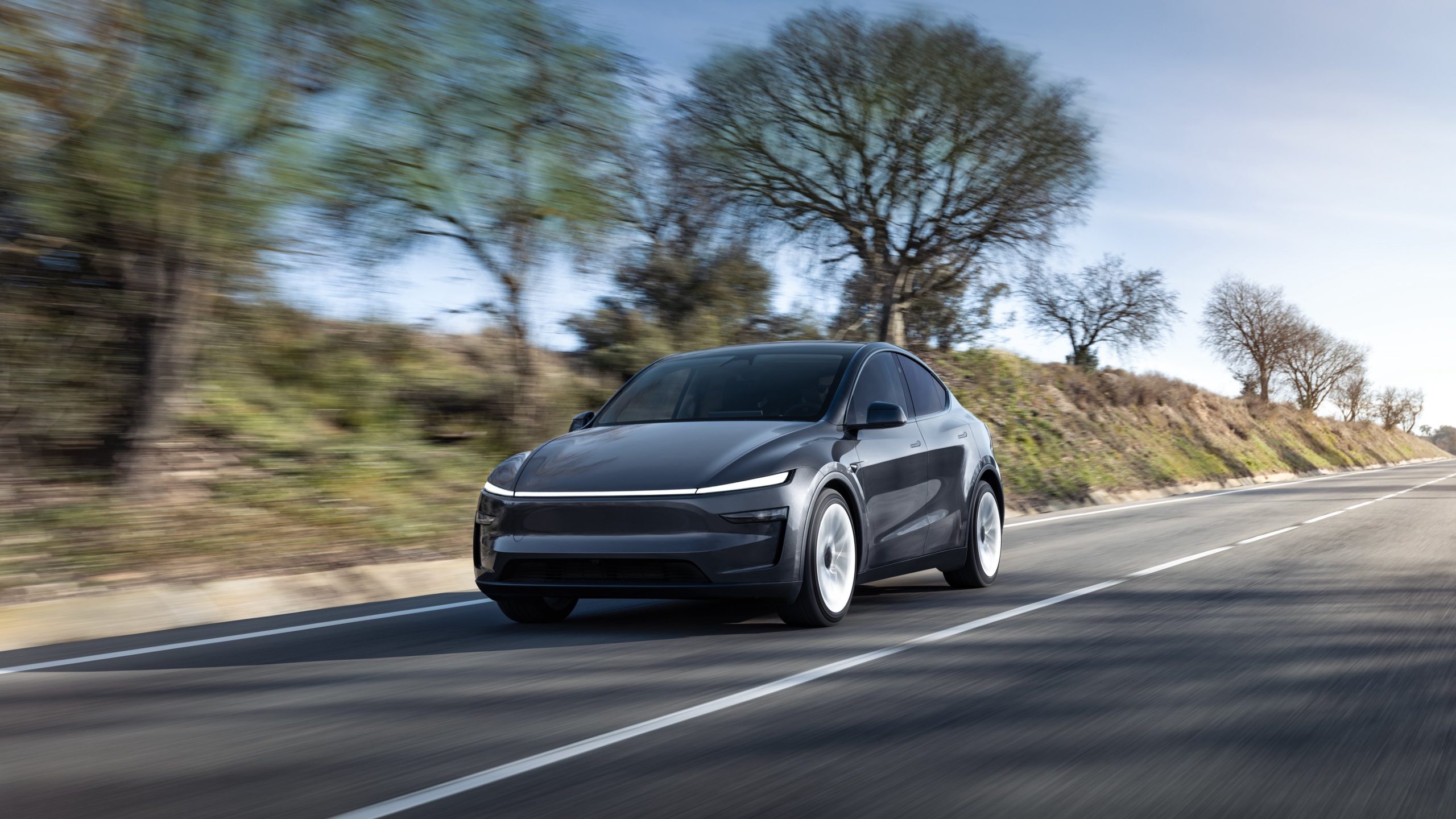
Tesla’s sales in the United Kingdom rose in June, climbing 14% year-over-year to 7,719 units, as per data from the Society of Motor Manufacturers and Traders (SMMT). The spike in the company’s sales coincided with the first deliveries of the updated Model Y last month.
Model Y deliveries support Tesla’s UK recovery
Tesla’s June performance marked one of its strongest months in the UK so far this year, with new Model Y deliveries contributing significantly to the company’s momentum.
While the SMMT listed Tesla with 7,719 deliveries in June, independent data from New AutoMotive suggested that the electric vehicle maker registered 7,891 units during the month instead. However, year-to-date figures for Tesla remain 2% down compared to 2024, as per a report from Reuters.
While Tesla made a strong showing in June, rivals are also growing. Chinese automaker BYD saw UK sales rise nearly fourfold to 2,498 units, while Ford posted the highest EV growth among major automakers, with a more than fourfold increase in the first half of 2025.
Overall, the UK’s battery electric vehicle (BEV) demand surged 39% to to 47,354 units last month, helping push total new car sales in the UK to 191,316 units, up 6.7% from the same period in 2024.
EV adoption accelerates, but concerns linger
June marked the best month for UK car sales since 2019, though the SMMT cautioned that growth in the electric vehicle sector remains heavily dependent on discounting and support programs. Still, one in four new vehicle buyers in June chose a battery electric vehicle.
SMMT Chief Executive Mike Hawes noted that despite strong BEV demand, sales levels are still below regulatory targets. “Further growth in sales, and the sector will rely on increased and improved charging facilities to boost mainstream electric vehicle adoption,” Hawes stated.
Also taking effect this week was a new US-UK trade deal, which lowers tariffs on UK car exports to the United States from 27.5% to 10%. The agreement could benefit UK-based EV producers aiming to expand across the country.
News
Tesla Model 3 ranks as the safest new car in Europe for 2025, per Euro NCAP tests
Despite being on the market longer than many of its rivals, the Tesla Model 3 continues to set the bar for vehicle safety.

The Tesla Model 3 has been named the safest new car on sale in 2025, according to the latest results from the Euro NCAP. Among 20 newly tested vehicles, the Model 3 emerged at the top of the list, scoring an impressive 359 out of 400 possible points across all major safety categories.
Tesla Model 3’s safety systems
Despite being on the market longer than many of its rivals, the Tesla Model 3 continues to set the bar for vehicle safety. Under Euro NCAP’s stricter 2025 testing protocols, the electric sedan earned 90% for adult occupant protection, 93% for child occupant protection, 89% for pedestrian protection, and 87% for its Safety Assist systems.
The updated Model 3 received particular praise for its advanced driver assistance features, including Tesla’s autonomous emergency braking (AEB) system, which performed well across various test scenarios. Its Intelligent Speed Assistance and child presence detection system were cited as noteworthy features as well, as per a WhatCar report.
Other notable safety features include the Model 3’s pedestrian-friendly pop-up hood and robust crash protection for both front and side collisions. Euro NCAP also highlighted the Model 3’s ability to detect vulnerable road users during complex maneuvers, such as turning across oncoming traffic.
Euro NCAP’s Autopilot caution
While the Model 3’s safety scores were impressive across the board, Euro NCAP did raise concerns about driver expectations of Tesla’s Autopilot system. The organization warned that some owners may overestimate the system’s capabilities, potentially leading to misuse or inattention behind the wheel. Even so, the Model 3 remained the highest-scoring vehicle tested under Euro NCAP’s updated criteria this year.
The Euro NCAP’s concerns are also quite interesting because Tesla’s Full Self-Driving (FSD) Supervised, which is arguably the company’s most robust safety suite, is not allowed for public rollout in Europe yet. FSD Supervised would allow the Model 3 to navigate inner city streets with only minimal human supervision.
Other top scorers included the Volkswagen ID.7, Polestar 3, and Geely EX5, but none matched the Model 3’s total score or consistency across categories. A total of 14 out of 20 newly tested cars earned five stars, while several models, including the Kia EV3, MG ZS, and Renault 5, fell short of the top rating.
Elon Musk
Why Tesla’s Q3 could be one of its biggest quarters in history
Tesla could stand to benefit from the removal of the $7,500 EV tax credit at the end of Q3.

Tesla has gotten off to a slow start in 2025, as the first half of the year has not been one to remember from a delivery perspective.
However, Q3 could end up being one of the best the company has had in history, with the United States potentially being a major contributor to what might reverse a slow start to the year.
Earlier today, the United States’ House of Representatives officially passed President Trump’s “Big Beautiful Bill,” after it made its way through the Senate earlier this week. The bill will head to President Trump, as he looks to sign it before his July 4 deadline.
The Bill will effectively bring closure to the $7,500 EV tax credit, which will end on September 30, 2025. This means, over the next three months in the United States, those who are looking to buy an EV will have their last chance to take advantage of the credit. EVs will then be, for most people, $7,500 more expensive, in essence.
The tax credit is available to any single filer who makes under $150,000 per year, $225,000 a year to a head of household, and $300,000 to couples filing jointly.
Ending the tax credit was expected with the Trump administration, as his policies have leaned significantly toward reliance on fossil fuels, ending what he calls an “EV mandate.” He has used this phrase several times in disagreements with Tesla CEO Elon Musk.
Nevertheless, those who have been on the fence about buying a Tesla, or any EV, for that matter, will have some decisions to make in the next three months. While all companies will stand to benefit from this time crunch, Tesla could be the true winner because of its sheer volume.
If things are done correctly, meaning if Tesla can also offer incentives like 0% APR, special pricing on leasing or financing, or other advantages (like free Red, White, and Blue for a short period of time in celebration of Independence Day), it could see some real volume in sales this quarter.
You can now buy a Tesla in Red, White, and Blue for free until July 14 https://t.co/iAwhaRFOH0
— TESLARATI (@Teslarati) July 3, 2025
Tesla is just a shade under 721,000 deliveries for the year, so it’s on pace for roughly 1.4 million for 2025. This would be a decrease from the 1.8 million cars it delivered in each of the last two years. Traditionally, the second half of the year has produced Tesla’s strongest quarters. Its top three quarters in terms of deliveries are Q4 2024 with 495,570 vehicles, Q4 2023 with 484,507 vehicles, and Q3 2024 with 462,890 vehicles.
-

 Elon Musk4 days ago
Elon Musk4 days agoTesla investors will be shocked by Jim Cramer’s latest assessment
-

 News1 week ago
News1 week agoTesla Robotaxi’s biggest challenge seems to be this one thing
-

 Elon Musk2 weeks ago
Elon Musk2 weeks agoFirst Look at Tesla’s Robotaxi App: features, design, and more
-

 News2 weeks ago
News2 weeks agoWatch Tesla’s first driverless public Robotaxi rides in Texas
-

 News2 weeks ago
News2 weeks agoSpaceX and Elon Musk share insights on Starship Ship 36’s RUD
-

 News1 week ago
News1 week agoWatch the first true Tesla Robotaxi intervention by safety monitor
-

 News2 weeks ago
News2 weeks agoTesla has started rolling out initial round of Robotaxi invites
-
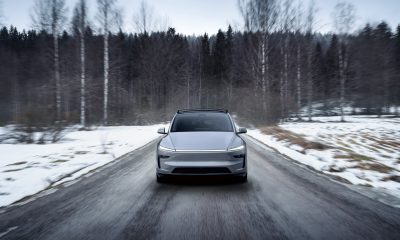
 Elon Musk2 weeks ago
Elon Musk2 weeks agoTesla to launch in India in July with vehicles already arriving: report

